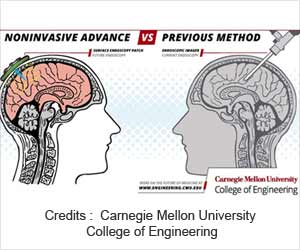
New tech enables deep tissue imaging during surgery
Go to source).
‘From visible to beyond, a single device transforms surgery with spectral precision. #surgicalinnovation #medicaltechnology #medindia’
Tweet it Now
Advertisement
Innovative HSI System for Enhanced Imaging Beyond Visible Spectrum
Traditional imaging techniques typically capture light intensity at specific wavelengths, whereas HSI captures and processes information across a given electromagnetic spectrum, offering a comprehensive understanding of materials based on their unique spectral signatures. Near-infrared hyperspectral imaging (NIR-HSI) has garnered attention for its non-destructive analysis capabilities, particularly in the food and industrial sectors.However, for wavelengths beyond the visible spectrum, such as over-thousand-nanometer (OTN) wavelengths, conventional cameras lose sensitivity, posing a challenge for imaging devices. Despite the development of various HSI devices, none have been capable of NIR-HSI with a rigid scope, essential for portability and medical applications.
Led by Professor Hiroshi Takemura from Tokyo University of Science (TUS), the research team devised an innovative system equipped with a supercontinuum (SC) light source and an acoustic-opto tunable filter (AOTF). The SC light source emits intense coherent white light, while the AOTF selectively extracts specific wavelengths, facilitating easy light transmission and rapid wavelength switching.
Advertisement
Advantages and Validation of the Innovative HSI System
Their system boasts remarkable capabilities, spanning from visible to OTN wavelengths, enabling both visible and NIR-HSI. Notably, it offers advantages such as low light power for non-destructive imaging and downsizing potential. Additionally, it provides a more continuous NIR spectrum compared to conventional devices.To validate their system, the researchers conducted experiments involving the classification of spectra obtained from various materials. Utilizing a neural network, they achieved impressive accuracy in classifying different targets, demonstrating the system's ability to extract molecular vibration information.
Advertisement
Future Directions and Implications of HSI Technology
Looking ahead, the team envisions further enhancements to improve image quality and correct chromatic aberrations. With continued advancements, the proposed HSI technology is poised to find applications in industrial inspection and quality control, serving as a "superhuman vision" tool with vast potential.Professor Takemura emphasizes the transformative impact of their breakthrough, particularly in medical settings. By visualizing previously unseen details, such as invaded cancer areas and deep tissues, the technology promises to enhance surgical navigation and ultimately improve patient outcomes.
In conclusion, the development of the world's first rigid endoscope system for hyperspectral imaging represents a significant milestone in medical technology. With its potential to unveil hidden insights and drive innovation across various industries, this breakthrough heralds a new era of perception and understanding.
Reference:
- New tech enables deep tissue imaging during surgery - (https://phys.org/news/2024-04-tech-enables-deep-tissue-imaging.html)
Source-Medindia









